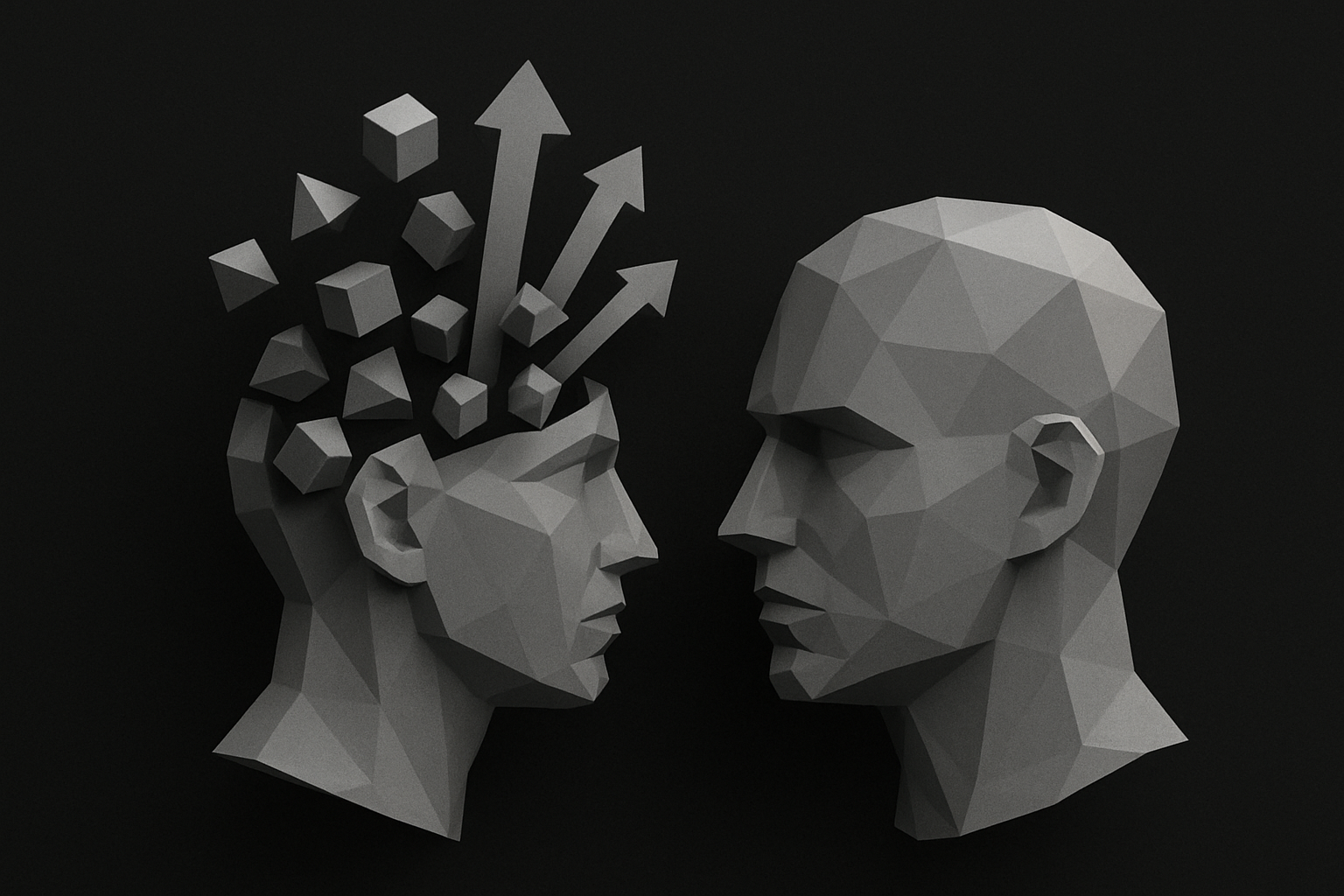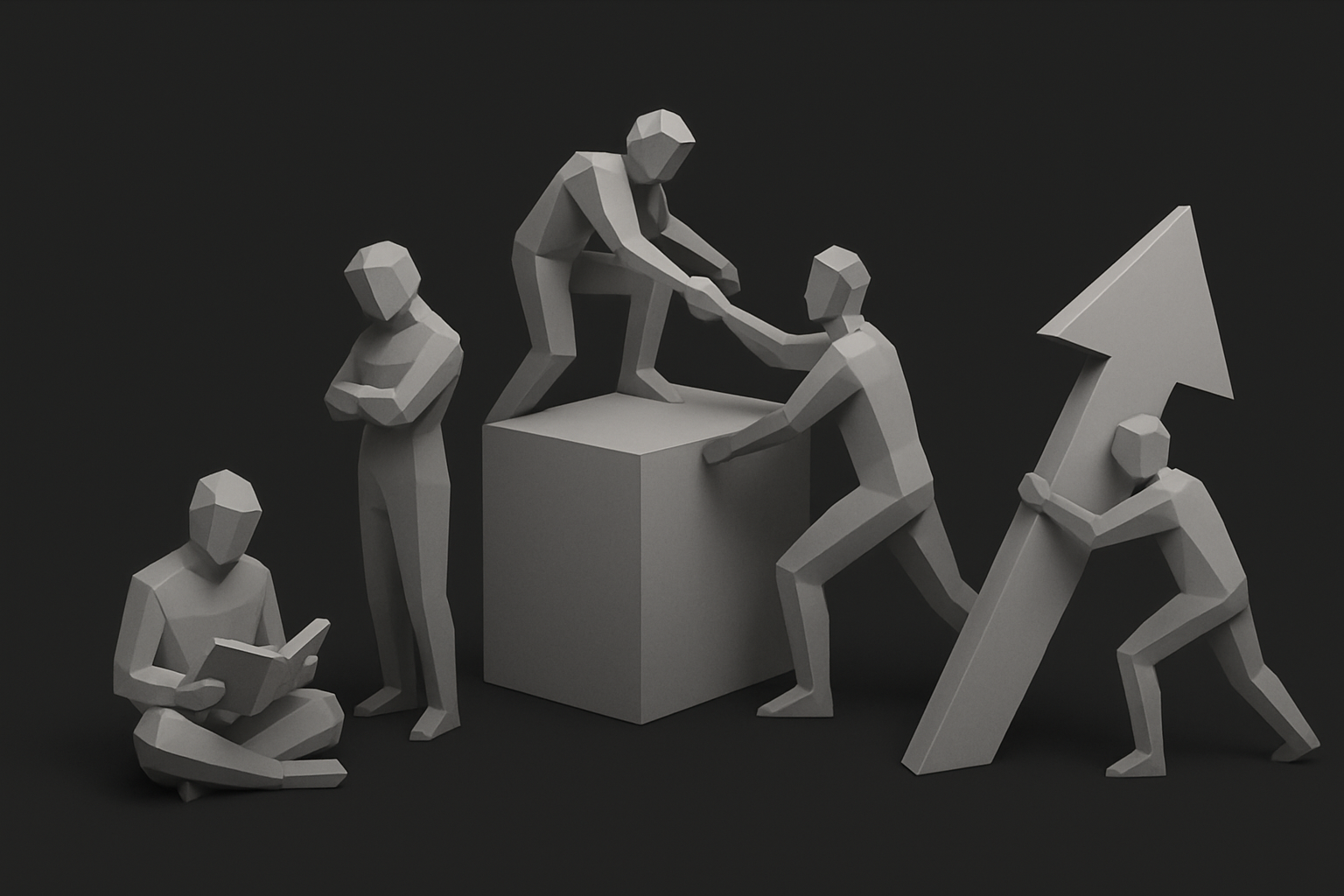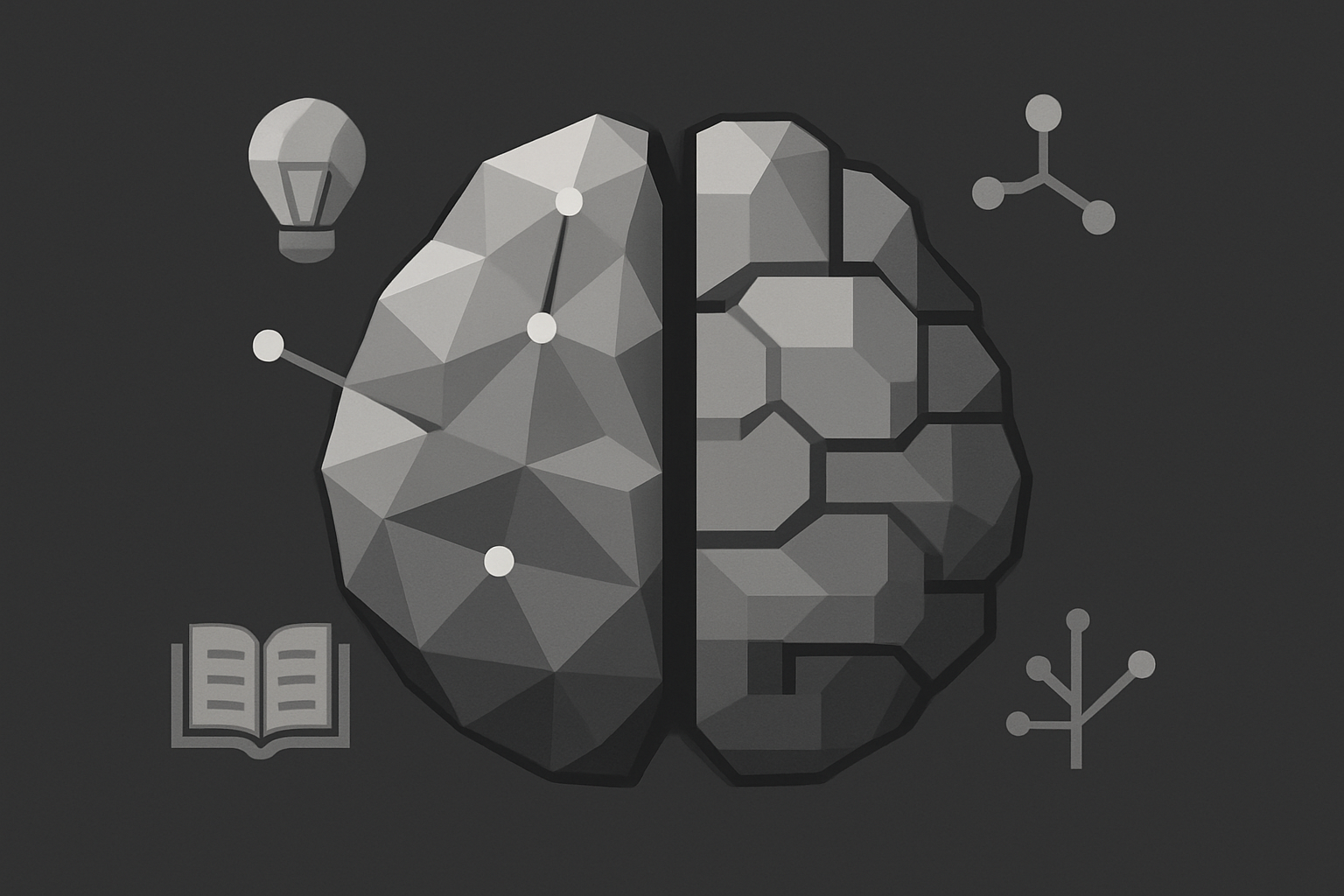In today’s rapidly changing world, how you think can shape your path more than ever before. Whether you’re pursuing personal growth, learning new skills, or striving for career advancement, your mindset is a powerful force. This article unpacks the key differences between a growth mindset and a fixed mindset as we head into 2025—revealing how each impacts learning, achievement, and personal development.
Curious about how your own approach might help or hinder your goals? As you read, consider which mindset you lean toward, and discover practical strategies to unlock your full potential.
Understanding Mindset: Definitions and Origins
Unlocking the difference between a growth mindset and a fixed mindset starts with understanding what each really means. These foundational beliefs shape how we learn, handle setbacks, and achieve our goals—especially as we move into the future of work and education.

Defining Growth Mindset
The term growth mindset was introduced by psychologist Carol Dweck. It’s the belief that intelligence, skills, and abilities can be developed over time through effort, learning, and perseverance. Rather than seeing talent as something you either have or don’t, a growth mindset encourages embracing challenges and learning from mistakes.
Studies repeatedly show that people with a growth mindset are more likely to improve their performance over time. For example, students who adopt this approach tend to see setbacks as opportunities to learn, not as signs of failure. This mindset is about seeing potential everywhere—even in your own mistakes.
Defining Fixed Mindset
In contrast, a fixed mindset is grounded in the belief that intelligence and abilities are static traits. People with a fixed mindset often think their talents are set in stone, leading them to avoid challenges where they might fail or appear less capable.
When faced with difficulty, a fixed mindset can cause individuals to give up easily, assuming their effort won’t make a difference. Research links this mindset to lower resilience and less willingness to try new things. For example, someone with a fixed mindset might avoid learning a new skill, fearing that failure would reveal their limitations.
Historical Context and Evolution
Carol Dweck’s research in the late 20th century sparked widespread interest in how beliefs about intelligence shape outcomes. Initially focused on academic settings, her work soon influenced both education and business, prompting teachers and leaders to reconsider how they talk about effort and ability.
Over time, the concept of mindset has evolved. Recent studies debate how fixed or flexible mindsets really are, with more experts recognizing that people can shift between the two depending on context. In 2025, growth mindset theory has become a cornerstone of digital learning strategies and workplace development programs, reflecting a broader understanding of human potential.
Mindset in 2025: Why It Matters Now
Today, the ability to adapt your mindset is more important than ever. As technology and remote work reshape industries, growth mindset is a key differentiator in both personal and professional growth. Data from the Mindset Statistics Report 2025 shows that mindset interventions can lead to greater resilience and achievement, though results may vary.
For students, professionals, and entrepreneurs, having a growth mindset helps navigate uncertainty and change. Whether you’re learning new digital skills or facing unexpected setbacks, your mindset determines how you respond—and how far you’ll go.
Key Characteristics: Growth Mindset vs Fixed Mindset
What truly separates a growth mindset from a fixed mindset? To help you visualize the differences, here’s a quick comparison:
| Characteristic | Growth Mindset | Fixed Mindset |
|---|---|---|
| Belief About Ability | Can develop with effort | Static, unchangeable |
| Response to Challenges | Embraces and learns from them | Avoids or gives up |
| Feedback Handling | Welcomes and uses for improvement | Feels threatened or discouraged |
| Effort Value | Essential path to mastery | Seen as fruitless if not talented |
| View of Others’ Success | Inspiration and learning opportunity | Threatening or envy-inducing |
| Mindset Fluidity | Recognizes mindset can shift with context | Tends to see mindset as fixed |
Let’s break down these characteristics to see how each mindset operates in real life.

Core Beliefs and Thinking Patterns
At the heart of the growth mindset is the belief that intelligence and skills can be developed over time. People with this mindset see abilities as flexible—something you can nurture with effort, learning, and persistence. In contrast, the fixed mindset centers on the idea that talents are innate: you either “have it” or you don’t.
This difference shows up in self-talk. For example, a growth mindset will say, “I haven’t mastered this yet,” while a fixed mindset says, “I can’t do this.” These beliefs shape how we set goals and respond to obstacles. Research, such as the Growth Mindset and Mastery Goals Study, demonstrates that adults with a growth mindset tend to pursue mastery and continuous improvement.
Approach to Challenges and Failure
How do you react to setbacks? With a growth mindset, challenges are seen as valuable opportunities to learn and grow. Mistakes are not proof of inadequacy but stepping stones toward progress. This mindset encourages you to take risks, try new things, and persist even when things get tough.
In a fixed mindset, challenges often trigger anxiety or avoidance. Failure is interpreted as a reflection of one’s limits, leading to a reluctance to try again. The difference is clear: growth mindset individuals are more likely to embrace difficult tasks and show resilience, while fixed mindset thinkers may give up or avoid challenges to protect their self-image.
Response to Feedback and Criticism
Feedback is a powerful tool for growth, but only if you’re open to it. Those with a growth mindset welcome constructive criticism, viewing it as essential for improvement. They separate their sense of self-worth from the feedback they receive, making it easier to learn and adapt.
On the other hand, a fixed mindset can make feedback feel personal and threatening. Criticism is often seen as an attack rather than an opportunity, leading to defensiveness or discouragement. This difference can be seen in performance reviews at work—growth mindset employees are eager for feedback, while fixed mindset employees may dread it.
Effort, Persistence, and Resilience
Effort is not just tolerated in a growth mindset—it’s celebrated. People with this perspective understand that mastery comes from sustained effort and resilience. When faced with setbacks, they dig deeper, learn from the experience, and continue moving forward.
A fixed mindset, however, sees effort as a sign of inadequacy. If you have to try hard, you must not be good enough—so why bother? This belief can sap motivation and lead to giving up easily. Studies have shown that mindset interventions can increase persistence, especially for those who start out struggling.
Attitude Toward Success of Others
How you view other people’s achievements says a lot about your mindset. With a growth mindset, the success of others is inspiring—a chance to learn, collaborate, and improve. This attitude fosters teamwork and a culture where everyone can thrive.
Contrast this with the fixed mindset, where another person’s success can feel threatening. Instead of inspiration, it breeds envy or resentment. In team settings, this can undermine collaboration and create unhealthy competition, holding everyone back.
Mindset Fluidity: Can You Have Both?
It’s important to remember that mindset isn’t all-or-nothing. Most people shift between growth mindset and fixed mindset depending on the situation. Stress, criticism, or even a supportive environment can trigger these shifts.
For example, someone who usually has a growth mindset might slip into a fixed mindset when faced with harsh criticism. Self-awareness is the key—recognizing these shifts allows you to consciously steer back toward a growth mindset. The ability to adapt your thinking is itself a sign of a developing mindset.
Real-World Examples and Case Studies
Stories breathe life into the concept of growth mindset. From classrooms to boardrooms, the way people respond to challenges reveals how mindset shapes outcomes. Let’s explore how growth mindset and fixed mindset play out in real life—and why these differences matter in 2025.

Growth Mindset in Action
The growth mindset can be seen in autodidacts—think Abraham Lincoln, Leonardo Da Vinci, or Bill Gates—who taught themselves new skills despite obstacles. Today, millions embrace this approach by learning coding, design, or languages via online platforms like YouTube and MOOCs.
- Self-learners persist through mistakes and setbacks.
- They actively seek feedback to improve.
- They see every failure as a lesson, not a defeat.
For example, someone mastering a new programming language often encounters bugs. Instead of giving up, those with a growth mindset treat each error as a stepping stone, fueling their progress and confidence.
Fixed Mindset in Practice
A fixed mindset often leads individuals to avoid challenges altogether. In schools, students may shy away from difficult subjects, fearing poor grades will expose their limitations. In the workplace, professionals might resist adopting new technologies, feeling their skills are set in stone.
- Employees may reject digital transformation.
- Teams can stagnate due to fear of failure.
- Individuals limit themselves by sticking to familiar routines.
If a company introduces new software, those with a fixed mindset might complain or disengage, convinced they can't adapt. This reluctance blocks growth and innovation, showing how powerful mindset can be in shaping career trajectories.
Education: Mindset Interventions and Outcomes
Schools worldwide are experimenting with growth mindset programs to boost student achievement. While some see modest gains, others experience little change—results often depend on how deeply the approach is integrated.
For instance, a recent study highlighted that U.S. ninth graders improved their GPA by 0.10 points after targeted interventions. The Benefits of Changing Students' Mindsets article discusses how embracing a growth mindset can positively impact learning outcomes, especially for students initially struggling.
These interventions encourage students to view challenges as opportunities and mistakes as part of the journey, laying the groundwork for lifelong resilience.
Business: Leadership and Team Performance
Organizations with a growth mindset culture foster innovation, adaptability, and collaboration. Leaders who model this mindset encourage teams to experiment, learn from failures, and share ideas openly.
- Growth mindset teams adapt faster to change.
- Fixed mindset cultures may punish mistakes, stifling creativity.
- Companies like Google champion psychological safety, fueling continuous learning.
When employees feel safe to take risks, they’re more likely to propose bold solutions. In contrast, rigid organizations can fall behind as markets evolve, illustrating why growth mindset is a competitive advantage in 2025.
Mindset and Personal Development
On an individual level, adopting a growth mindset transforms how setbacks are viewed. Instead of seeing obstacles as stop signs, people see them as detours toward new possibilities.
- Personal stories abound of overcoming adversity through mindset shifts.
- The “not yet” mentality replaces all-or-nothing thinking.
- Progress becomes a series of small wins, not just big leaps.
Someone facing job loss, for example, might use the growth mindset to reskill or pivot careers, turning uncertainty into a launching pad for future success. This approach empowers people to navigate life’s unpredictability with courage and optimism.
The Science Behind Mindset: Research and Data in 2025
The science supporting the growth mindset has evolved rapidly in recent years. Today, research spans psychology, neuroscience, education, and business—each offering unique insights. Let’s explore the key findings shaping our understanding of mindset in 2025.

Foundational Studies and Evidence
Carol Dweck’s pioneering research laid the groundwork for what we now call the growth mindset. Her studies in the late 20th century revealed that students who believed intelligence could be developed achieved more than those who saw it as fixed.
A classic experiment asked students to respond to statements about intelligence. Those with a growth mindset showed greater perseverance and improvement. Academic success and personal achievement were consistently linked to adopting this perspective.
| Study Year | Key Finding | Relevance |
|---|---|---|
| 1998 | Beliefs shape achievement | Academic performance |
| 2006 | Mindset predicts motivation | Learning outcomes |
This early evidence set the stage for broader investigation.
Recent Findings and Critiques
Large-scale studies in the 2020s have produced mixed results. Some interventions show significant gains, while others report minimal impact. For example, a Growth Mindset Intervention in Adolescents demonstrated improved academic achievement in early adolescents when delivered by teachers.
Critics argue that overgeneralization and inconsistent implementation can dilute effectiveness. Meta-analyses in 2025 highlight the importance of context, suggesting that growth mindset programs work best when tailored and supported over time.
Despite debate, the overall trend indicates that a well-supported growth mindset strategy can foster resilience and sustained progress.
Neuroscience of Mindset
Advancements in neuroscience have provided compelling evidence for the growth mindset. Brain imaging studies reveal that learning actually changes neural structures—a concept known as brain plasticity.
Individuals with a growth mindset show increased neural activity when facing challenges, signaling greater engagement and adaptability. By contrast, a fixed mindset is associated with avoidance behaviors and less cognitive flexibility.
Researchers now agree that the brain’s ability to change supports the idea that skills and intelligence are not static but can be developed throughout life.
Mindset and Motivation Theories
The growth mindset aligns closely with leading motivation theories, such as self-determination theory. Believing in one’s ability to improve enhances intrinsic motivation, fueling persistence even when tasks become difficult.
Studies in 2025 show that students with a growth mindset set more ambitious goals and stick with them longer. This mindset encourages individuals to view setbacks as learning opportunities, rather than final judgments on their abilities.
Ultimately, the right mindset creates a virtuous cycle of motivation, effort, and achievement.
Mindset in the Digital Age
In 2025, the growth mindset is more relevant than ever. Online learning and remote work demand adaptability and lifelong learning. Digital platforms now offer tools to assess and develop a growth mindset, using AI-driven feedback to personalize the learning experience.
Professionals embracing a growth mindset adapt more quickly to technological changes. For students and workers alike, mindset shapes how they approach new challenges, whether in coding, collaboration, or creative problem-solving.
The science is clear: fostering a growth mindset helps individuals thrive amid uncertainty and rapid change.
Mindset in Education and the Workplace
The influence of mindset has never been more significant than in today’s classrooms and workplaces. Whether you’re a student facing new learning challenges or a professional navigating an evolving job market, your perspective can dramatically shape your outcomes. Let’s explore how adopting a growth mindset transforms both educational and professional environments.
Educational Strategies for Cultivating Growth Mindset
In classrooms, fostering a growth mindset requires more than motivational posters—it’s about daily habits and language. Teachers who frame challenges as opportunities, encourage risk-taking, and model learning from mistakes help students internalize the belief that intelligence can be developed.
Simple strategies include using phrases like “You haven’t mastered this yet,” praising effort over innate talent, and sharing stories of famous individuals who persevered. Emphasizing process and persistence over perfection shifts students’ focus from fear of failure to curiosity and resilience. When educators consistently reinforce these principles, students are more likely to embrace setbacks as part of their journey.
Classroom Interventions: What Works?
Research into classroom interventions shows that even brief, targeted efforts can yield modest but meaningful gains for students—especially those struggling the most. For instance, integrating growth mindset language into lessons and feedback has been linked to GPA increases of around 0.10 for lower-achieving students.
However, the key to success lies in ongoing support. One-off workshops are less effective than sustained, everyday reinforcement. Teachers who weave growth mindset principles into classroom routines—such as group reflections on learning strategies or peer feedback sessions—help students build lasting habits. Ultimately, the environment must make it safe to try, fail, and try again.
Mindset and Lifelong Learning
In our rapidly changing world, lifelong learning is essential—and the growth mindset is its engine. Professionals who believe skills can be developed are more likely to pursue training, adapt to new technologies, and thrive in evolving roles.
Embracing continuous skill-building is crucial for those looking to stay competitive. For example, individuals actively developing high-income skills demonstrate how a growth mindset leads to greater adaptability and career success. Whether through online courses, mentorship, or self-directed projects, those with this mindset see learning as a lifelong adventure, not a destination.
Workplace Culture: Growth vs Fixed Mindset
Organizational culture plays a massive role in whether a growth mindset flourishes or fizzles. Companies that encourage experimentation, learning from mistakes, and open communication empower employees to innovate and take smart risks.
Conversely, workplaces dominated by a fixed mindset often penalize failure, stifling creativity and engagement. Leaders can foster a positive environment by supporting professional development, celebrating progress, and sharing stories of persistence. For entrepreneurs and teams alike, entrepreneurship mindset strategies offer actionable ways to embed growth mindset thinking into daily operations.
Leadership and Team Dynamics
Leaders set the tone for mindset across teams. Those who embody a growth mindset inspire their teams to tackle challenges, ask questions, and bounce back from setbacks. They model vulnerability by admitting mistakes and focusing on solutions rather than blame.
Teams led by these individuals tend to be more innovative, collaborative, and resilient—qualities essential for navigating uncertainty. In contrast, fixed mindset leaders may create an atmosphere of fear, discouraging open dialogue and risk-taking. The difference is visible in team morale, performance, and willingness to pursue ambitious goals.
Addressing Mindset Shifts and Barriers
Even with the best intentions, anyone can slip into a fixed mindset—especially when facing criticism or stress. Recognizing these triggers is the first step. Strategies like self-reflection, seeking mentorship, and reframing setbacks can help shift back into a growth mindset.
Supportive environments and coaching also play a vital role. When organizations provide space for open feedback and encourage curiosity, individuals are more likely to persist through obstacles. Over time, these collective efforts create cultures where learning and growth are the norm, not the exception.
Strategies for Adopting and Sustaining a Growth Mindset
Adopting a growth mindset in 2025 isn’t just about positive thinking—it’s a practical, ongoing journey. Whether you’re aiming to excel in your career, adapt to new technologies, or overcome personal setbacks, the following strategies can help you make growth mindset your default approach.
Self-Assessment and Awareness
The first step to developing a growth mindset is honest self-reflection. Are you quick to give up when faced with a challenge? Do you see intelligence as fixed, or do you believe it can grow?
Take time to journal about your reactions to setbacks, or use online self-assessment tools to spot your mindset patterns. Look for signals in your language—do you say “I can’t” or “I can’t yet”? These clues reveal whether you lean toward a fixed or growth mindset.
Regular reflection helps you catch negative self-talk early. Over time, this awareness becomes the foundation for lasting change.
Reframing Failure and Embracing “Not Yet”
Failure can feel like a full stop, but with a growth mindset, it becomes a comma—a pause before moving forward. Instead of labeling setbacks as proof you “can’t,” try adding “yet” to your self-talk.
For example, replace “I’m terrible at this” with “I haven’t mastered this—yet.” This simple shift encourages resilience and keeps you open to learning. When mistakes happen, pause to ask: What can I learn here? How can I improve?
By consistently reframing failure, you turn obstacles into opportunities for growth and progress.
Setting Goals and Tracking Progress
Clear, achievable goals are essential for sustaining a growth mindset. Set specific targets that stretch your abilities but remain realistic.
Break big ambitions into smaller steps. Use digital tools, like habit trackers or progress apps, to monitor your journey. Celebrate small wins along the way—they reinforce your belief in improvement.
Regularly review your progress and adjust your goals as needed. This keeps your growth mindset active, motivating you to keep moving forward, even when results take time.
Seeking Feedback and Constructive Criticism
Feedback isn’t always easy to hear, but it’s crucial for a growth mindset. Rather than seeing criticism as a threat, view it as a roadmap for improvement.
Ask for feedback from colleagues, mentors, or teachers. Focus on separating the message from your self-worth—constructive criticism is about your work, not your value as a person.
By welcoming feedback, you’ll uncover blind spots and accelerate your learning. Each piece of advice becomes a stepping stone toward mastery.
Building Supportive Environments
Surrounding yourself with growth-oriented people can make all the difference. Seek out peers, mentors, or communities that encourage experimentation and celebrate effort.
For professionals, this may mean joining masterminds or online groups focused on self-driven growth. If you’re considering going solo, the Working for yourself guide details how adaptability and a growth mindset drive success in self-employment.
Supportive environments help normalize setbacks and fuel continuous improvement.
Overcoming All-or-Nothing Thinking
All-or-nothing thinking can sabotage your growth mindset. Watch for words like “always,” “never,” or “I must be perfect.” These absolutes create pressure and fear of failure.
Instead, aim for progress over perfection. Celebrate incremental improvements, no matter how small. Remind yourself that mastery is a journey, not a single leap.
Challenging rigid beliefs helps you stay flexible, motivated, and open to new learning experiences.
Mindset and Purposeful Living
Aligning your growth mindset with personal values gives your efforts deeper meaning. Reflect on what truly matters to you—career, relationships, creativity, or learning.
Consider how a growth mindset can support your larger goals. In business, for example, the Solopreneur versus entrepreneur guide highlights how embracing adaptability enables both personal and professional fulfillment.
Purpose-driven growth mindset transforms challenges into meaningful opportunities, making every step forward more rewarding.
After exploring the key differences between a growth mindset and a fixed mindset, you might be wondering how to put these insights into action—especially if you want to move from trading your time for money to building something that works for you. At CreateSell, we believe your mindset is the foundation for turning your expertise into digital products and creating a business that grows with you. If you’re ready to take the next step and see how a growth mindset can actually fuel your entrepreneurial journey, let’s make it happen together—Get Started.